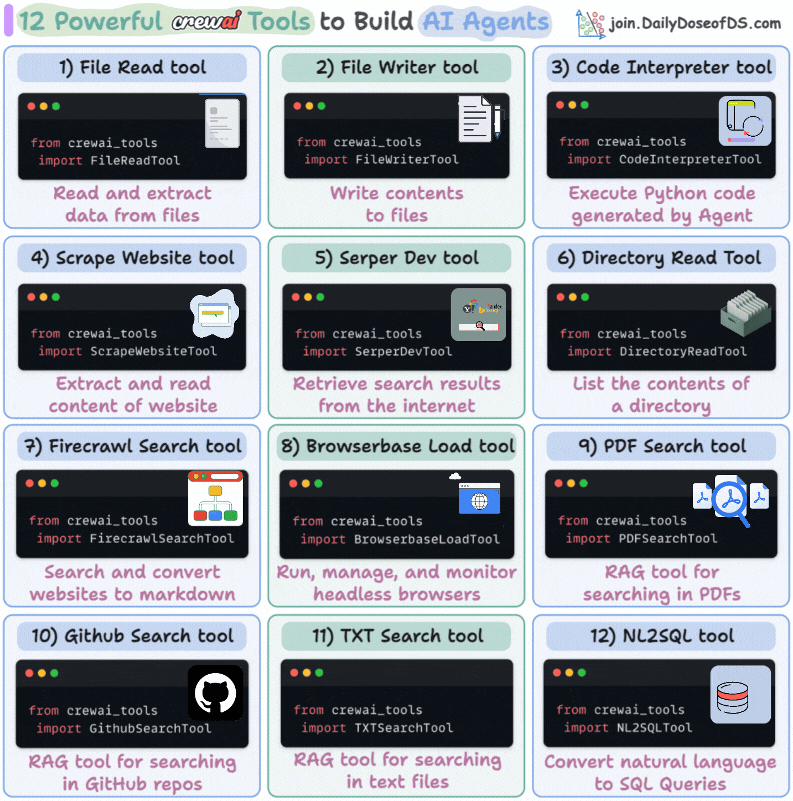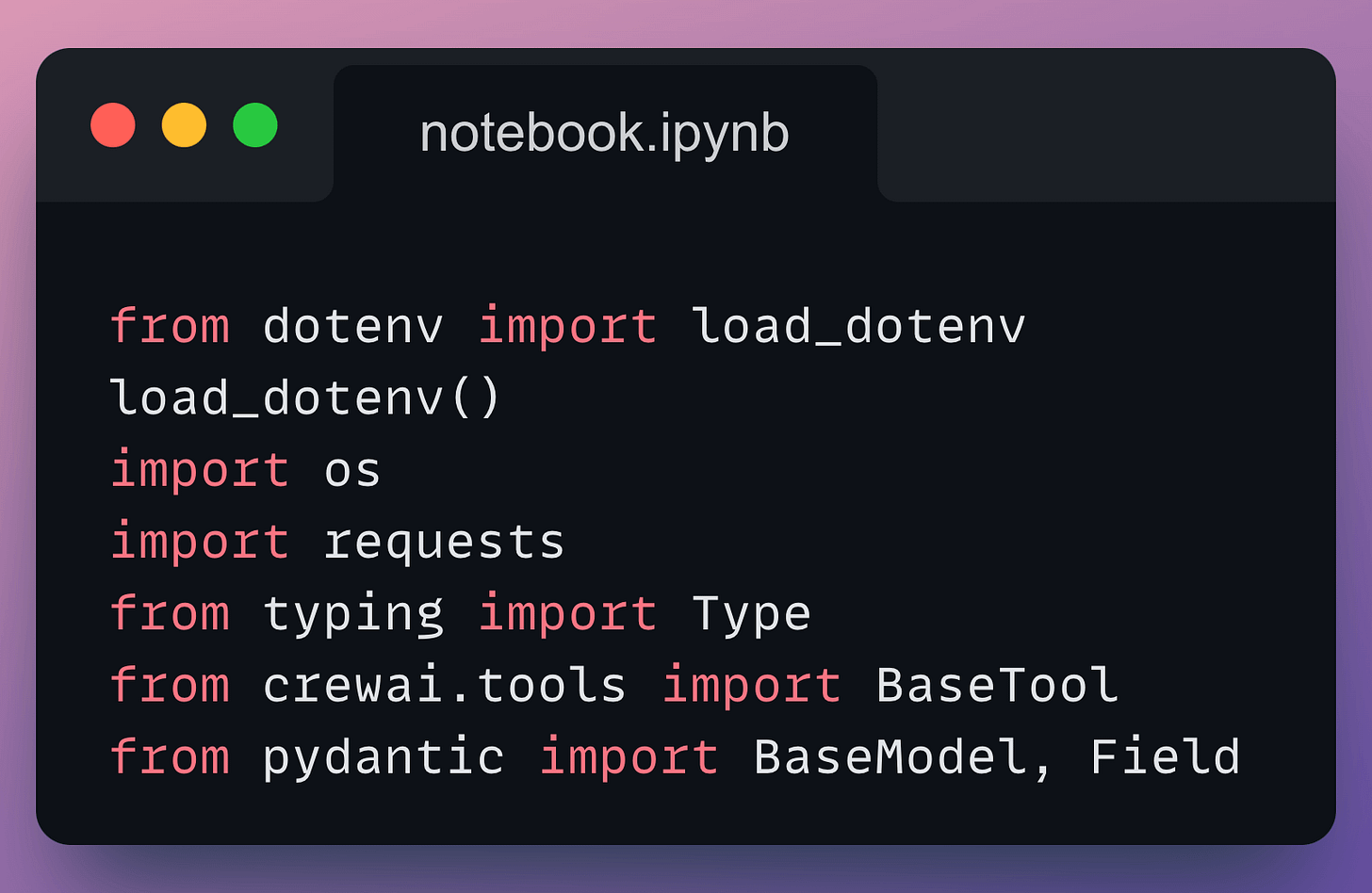Building Custom Tools for AI Agents
A simple two step process, clearly explained.
Why don't you automate that?
Browserbase is a cloud platform for hosting, managing, and monitoring headless browsers for web automation.
Its globally scalable infrastructure allows AI companies to navigate, interact with, and automate tasks on websites reliably.
See how Browserbase can power the world's best tools with headless browsers that work everywhere, every time—sign up free!
Thanks to Browserbase for partnering today!
Building Custom Tools for AI Agents
Agentic frameworks provide native support for several tools.
For instance, here are some powerful tools provided by CrewAI:
However, you may need to build custom tools at times.
Today, let us show how it’s done!
We’ll build a real-time currency conversion tool. Instead of making an Agent guess exchange rates, we will integrate a custom tool to help the Agent get live exchange rates.
Let’s begin!
First, get an exchange rate API key (it's free) and specify it in the .env file:
Next, we have some standard import statements:
To build a custom tool in CrewAI, you need to implement two classes:
#1) Class for input schema
Here, we declare the input fields the tool expects using Pydantic. Descriptions are important since they help the agent prepare a tool call.
#2) Class for the actual tool
Next, we define the CurrencyConverterTool by inheriting from BaseTool and declare attributes like name, description, arguments schema (which is the same as the input schema we defined above):
Every tool class has a _run method that implements the tool logic.
In the above code, we fetch live exchange rates using an API request. We also handle errors if the request fails or the currency code is invalid.
Done!
Now we build the Agent as usual and specify the tool we created above:
We define its Tasks:
We define the Crew and execute it:
Printing the response, we get this:
Works as expected!
Here, note that we directly passed a structured input to the Crew.
But real-world queries could look like this:
How much is 100 dollars in euros today?
We can introduce a Query Parser Agent (or even better…a regular LLM call) and produce structured outputs first. We can then pass the structured output like we did above.
Consider that an assignment from today’s newsletter issue, and feel free to reach out with your solution.
That said, we started a crash course to help you implement reliable Agentic systems, understand the underlying challenges, and develop expertise in building Agentic apps on LLMs, which every industry cares about now.
Here’s what we have done in the crash course (with implementation):
In Part 1, we covered the fundamentals of Agentic systems, understanding how AI agents act autonomously to perform tasks.
In Part 2, we extended Agent capabilities by integrating custom tools, using structured outputs, and we also built modular Crews.
In Part 3, we focused on Flows, learning about state management, flow control, and integrating a Crew into a Flow.
In Part 4, we extended these concepts into real-world multi-agent, multi-crew Flow projects.
In Part 5 and Part 6, we moved into advanced techniques that make AI agents more robust, dynamic, and adaptable, like Guardrails, Async execution, Callbacks, Human-in-the-loop, Multimodal Agents, and more.
In Part 8 and Part 9, we primarily focused on 5 types of Memory for AI agents, which help agents “remember” and utilize past information.
In Part 10, we implemented the ReAct pattern from scratch.
In Part 11, we implemented the Planning pattern from scratch.
In Part 12 and Part 13, we covered 10 practical steps to improve Agentic systems.
Of course, if you have never worked with LLMs, that’s okay. We cover everything in a practical and beginner-friendly way.
Thanks for reading!












